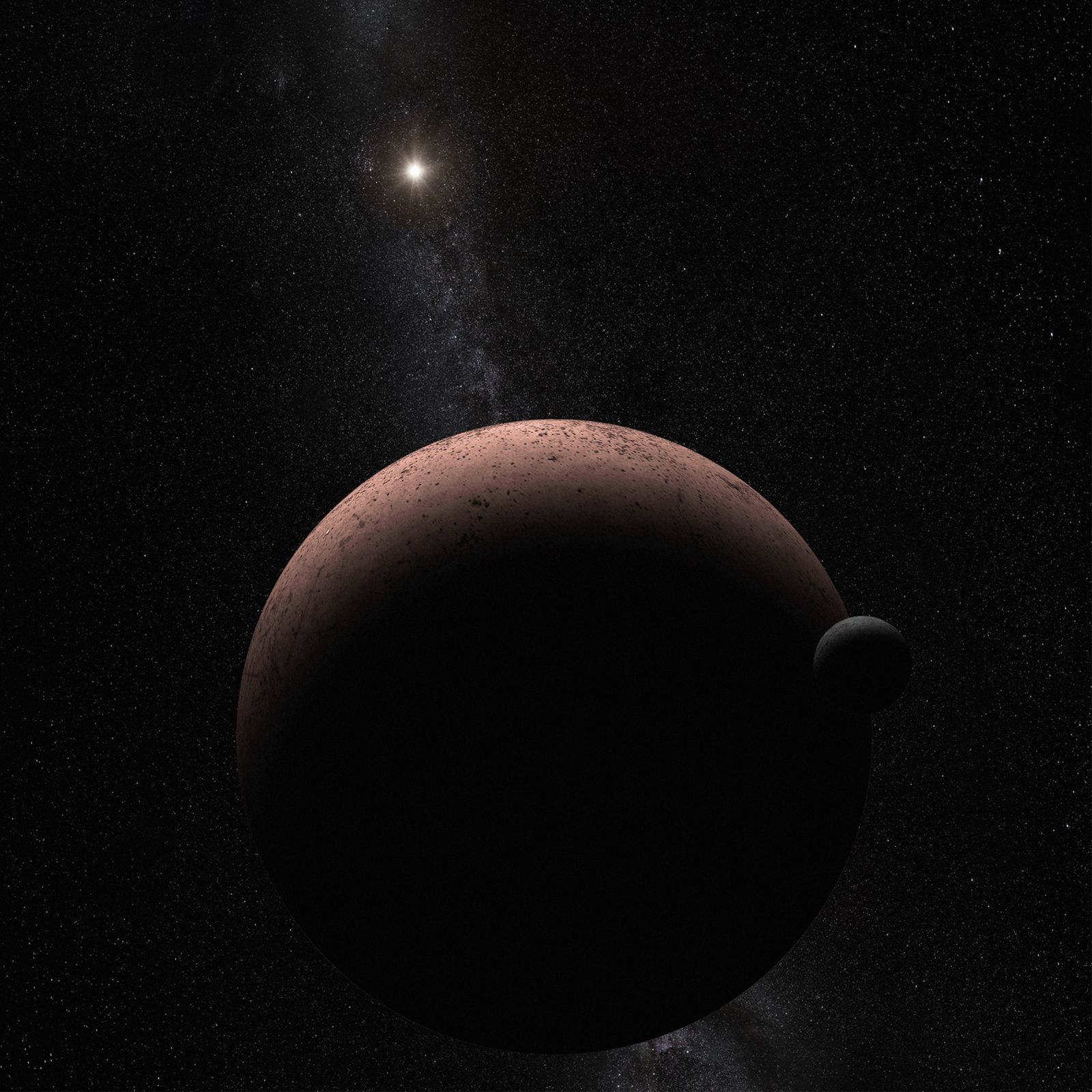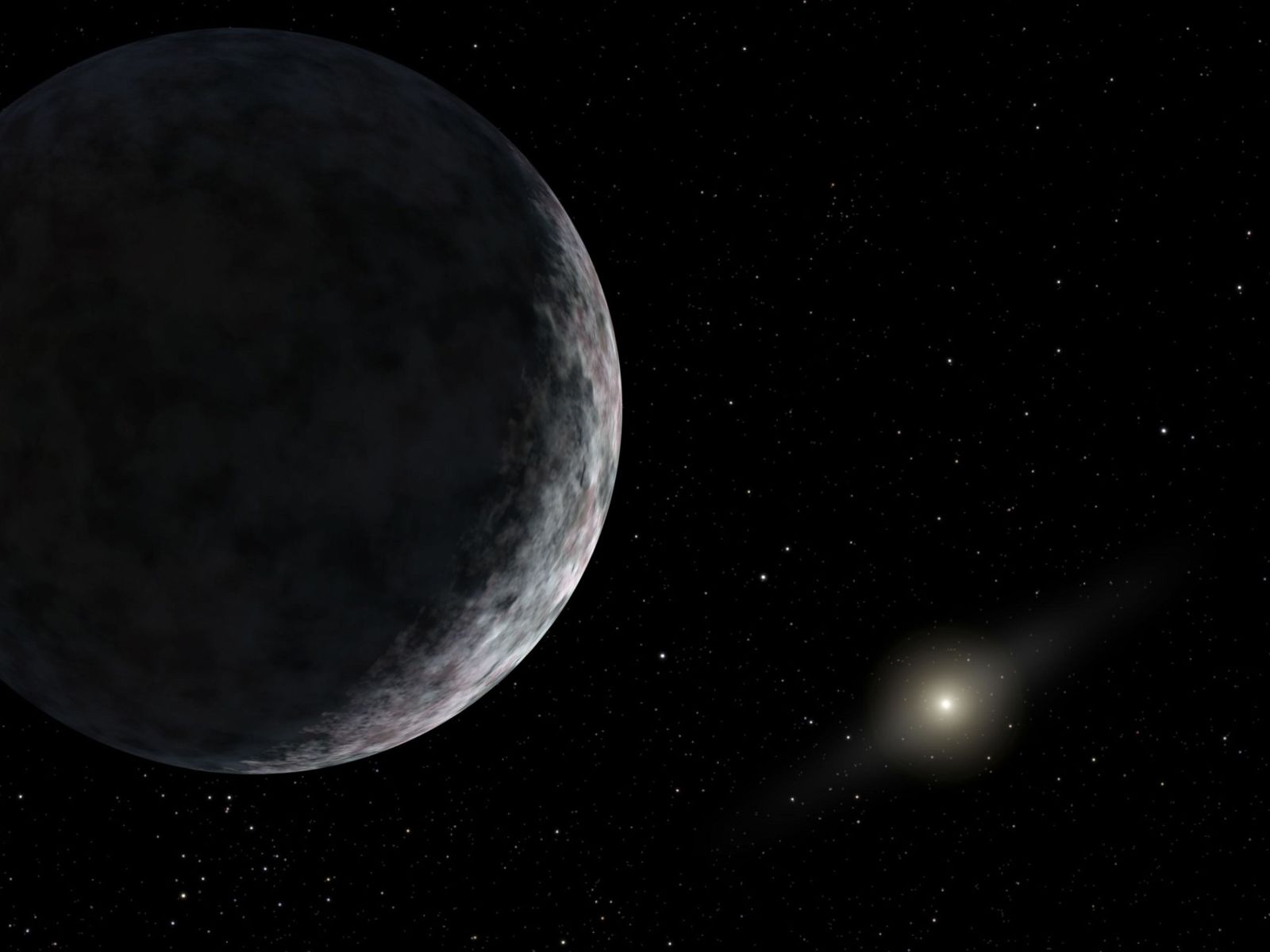Follow us on Google News (click on ☆)
The dwarf planets of the Solar System, such as Ceres, Haumea, Eris, Makemake, and Pluto, are primarily located in the Kuiper Belt, with the exception of Ceres. NASA's New Horizons probe, while flying by Pluto in 2015, observed signs of recent geological activity. This activity, thought to be due to interactions with its moon Charon, raised questions about the possibility of similar activity on other dwarf planets without moons.

The dwarf planet Makemake, less than half the size of Pluto, illustrated here with a moon.
Credit: NASA
A recent study, using spectral data from the James Webb Space Telescope, however, suggested that Eris and Makemake might also be geologically active. The analysis reveals the presence of thermogenic methane on their icy surfaces, indicating current or recent geological activity, such as hydrothermal or cryovolcanic activity.
Eris, comparable in size to Pluto, and Makemake, significantly smaller, defy expectations regarding their geological activity due to their size. These discoveries not only highlight the complex internal dynamics of these celestial bodies but also the possibilities of habitability, with the presence of hydrothermal vents being considered a key element in the emergence of life on Earth.
The implications of this research go beyond mere scientific curiosity; they open prospects for the search for extraterrestrial life, especially in environments where conditions potentially conducive to life were not expected to be found. Sending future probes to Eris and Makemake could provide concrete answers regarding their geological and biological potential.

The dwarf planet Eris, illustrated here, could be geologically active, according to new data from the JWST.
Credit: NASA
The study raises fundamental questions about our understanding of celestial bodies in the Kuiper Belt and beyond, reaffirming the importance of space exploration in the quest for knowledge about our Solar System and the possibilities of life beyond Earth.